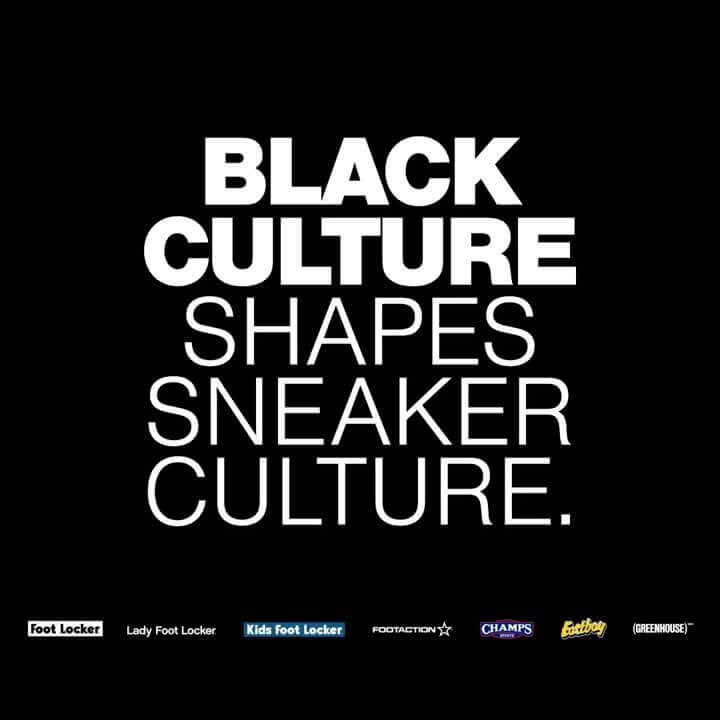![]()
First, there isn’t anything wrong with Foot Locker and other brands and retailers pulling together to acknowledge the profound influence on the rise of sneaker culture by Black America.
Second, there isn’t anything wrong with Foot Locker and other brands and retailers announcing these donations and programs. I’ve written before that money is a catalyst for the initial changes needed to improve opportunities for disenfranchised communities.
There is however a problem with the announcement of these projects on such notice after the current situation around Blacks Lives Matter and protests for social injustice. Implementation of a program with considerable budgets takes time. Consider that Nike announced the donations of 200 Million dollars to Black “Causes” on June 5th. There hasn’t been another mention of when and how these funds would be applied outside of additional money going towards programs already established.
Recognition is the first step towards change.
The speed of rolling out the steps is where the problem and the real work lies. There are questions which have to be answered for every company rolling out these announcements, which if I’m honest are simply marketing strategies until the programs are implemented.
- The questions have to be asked of Foot Locker’s relationship with Nike and other brands as it relates to adding product by Black designers and companies. How will established brands respond to giving up wall space to smaller brands?
- Will the addition of Black designers and products be implemented on a regional level? Which is a much smarter and easier play, but more complex logistically.
- What will be the requirements for submissions to buyers by these brands? If there isn’t a submission process and weeding out, the clutter could lead to frustration for the selection process.
- Will the current buying team be asked to take on the responsibility of sourcing new products? This is one that worries me the most. Foot Locker will have to either add new employees dedicated to this task, or current employees will be given additional work which will undoubtedly lead to internal frustration, stress and either the abandonment of the program or the addition of brands incapable of performing. When a brand fails it hurts other brands later. That scares me.
- Will a new team be added to look deeply at products and create a rubric? I know a number of companies that would fit into the store concept without disrupting the floor layout or offending Nike. The addition of new brands will require new floor displays and merchandising. Sales leads and store managers will have to learn additional information when store hours are already shortened due to Covid-19 and store operations are complex with dumb ass people who refuse to wear masks and threaten the safety of the people on the ground.
I recently wrote about the education of the consumer:
The Stark Truth Why Black Sneaker Brands Struggle and Blacks Aren’t Getting the Jobs at Big Brands
Foot Locker can add in Black brands, but that doesn’t mean people will buy Black. As consumer education begins, it could hurt bigger brands and those brands will undoubtedly adjust accordingly. While it is never announced as a policy and it can’t be proven, Nike doesn’t take kindly to stores adding new brands. Would a Langston Galloway led Q4 Sports LG9-III be placed alongside a Giannis Zoom Freak?

Will there be any storytelling in the store around these brands? Will the branding carry over to the website? Foot Locker had an opportunity to lift a Black owned brand in their investment into Super Heroic. When this happened I wrote this post about how a better integration of the product was needed to make sure the brand had a chance to succeed in its Kids Foot Locker stores:
Kid’s Footlocker Needs to Carry The Online Merchandising of Super Heroic Into the Store
I never had a chance to speak with anyone at Foot Locker and I’m not sure how the dialogue happened in the company, but Super Heroic recently had to step away from producing their footwear. The obvious issues with COVID-19 were a factor, but in store the models didn’t sell until they were marked down to 19.99 and in some instances 9.99 to clear out inventory. I have to think that the people in the marketing and merchandising department didn’t have a full grasp on how the Black, or any, consumer interacts with products in their stores. The product was difficult to find on the site which is a UX issue and in the store the storytelling was non-existent. Black footwear and apparel companies can not afford to have their product collapse and fail in such a public and prominent matter because the failure will directly shape future investments and opportunities.
A statement of action is a step, but the roll out and additional steps is where the work begins. I truly hope that Foot Locker really does accomplish an implementation of Black brands into their supply chains. This is a life changing project, but it has to be done with acute attention to detail and the brand has to take into consideration an educational aspect of developing a more conscious consumer which is a completely different issue.

